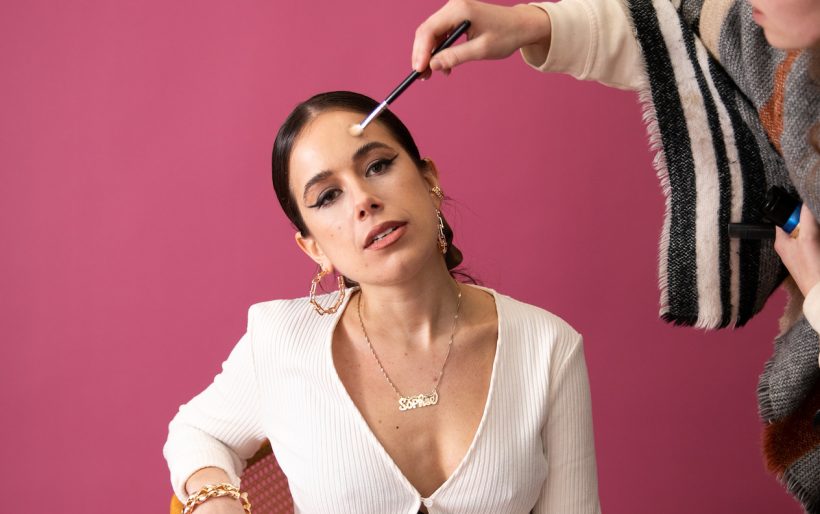Behind The Scene is a series which attempts to bring focus to the overlooked aspects of the Philadelphia music community. This is a collection of features on subjects whose stories are seldom told but whose contributions allow the Philadelphia music scene to thrive.
Picture it’s 1992. You just started a new band with a few friends you met at a show in West Philly. Through fits and starts, you’ve finally written a handful of songs, enough to play shows, maybe even put out an EP, if things go right. You lobby the local house show venue to let you guys play a Thursday night house show in their basement. Sure, he says, just make sure people show up. So now you get your friend who just got a new point and shoot camera to snap a few pictures of you and your band in front of a brick wall. You wear your tattered denim jacket, your drummer tries out that new impossibly high hairstyle, the bassist looks away from the camera, staring into the middle distance. The pictures come out fine, the low resolution and blurred edges almost charming. You print out 200 fliers in black and white with your band name plastered above your scowling faces. One Saturday afternoon, a few weeks before the show, you stick two dozen fliers to telephone poles and bathroom stalls around the city. You’ve now done more self-promotion than 80 percent of the bands you know.
Now say you’re in 2022. Same sort of band, same part of your career, same goals. You’ve got a show coming up at PhilaMOCA. You need to start promoting beyond your friends, but a flier won’t nearly be enough. You need to flood the Facebook timeline, tweet once a week, scale the mountain that is the Instagram algorithm. One photo shot with your friend’s phone won’t do, not when you need to keep the feed humming, not when you need to break through the noise. Now you need dozens of photos, different sizes, all high-resolution, unified and professional. You need to become not only a band but a brand, something people look at and recognize.
While a certain amount of salesmanship has been a part of musicians’ reality for as long as the very idea of popular music has existed, never before has the industry demanded such comprehensive self-promotion. No matter how DIY and independent, the need for constant self-promotion is a reality all musicians must face if they hope to expand their band beyond their circle of friends and family. An essential piece of this puzzle are promotional photos, which try their best to capture — and yes, sell — the very thing that makes your band unique.
Philly-based musician Sophie Coran recognized this necessity early on, and strived to take a hands-on approach to building her career. Though she’d take a few music business classes while living in London, Coran said the most effective lessons were learned by observing. What she saw were bands that took their art seriously and so too the promotional package surrounding that art. “If I am going to put out a professional product, I need all the visuals and assets to go along with it,” she says of her mindset at the time. “You figure out your brand and your identity as you get deeper into what you’re building and what you’re making.”
Brand can feel like a bit of an icky word, but the reality is what it is. We see it every day on our individual feeds. The line between the personal post and the advertisement are forever blurring. If an artist is going to get their art to the most people possible, they don’t have much of a choice but to engage in the branding of their art. According to a study by the Lee Business School at the University of Nevada, Las Vegas, it is essential for an artist to understand and develop their own personal brand, create something fans can bond with emotionally, and foster a loyalty that will develop beyond a single post. To do that, artists must consider the cohesion and consistency of the things they are posting and the best way to do that is to work with someone who both understands and develops your artistic identity.
Rachel Del Sordo first found photography while studying at Temple University, where an entry-level photojournalism class introduced her to the medium. It wasn’t until a few years later, when she interned at WXPN, that she truly fell in love with the symbiotic relationship of music and photography. What started as a skill for primarily shooting live performance soon blossomed into a career as an accomplished photographer, a career that has seen her work on promotional material for some of Philly’s most accomplished indie artists. Her mindset in regards to band and musician photography can be boiled down to the combination of her skills as both a photojournalist and her time shooting more feature-based photography — her work has appeared in places from the late JUMP Magazine to Stereogum and more — blending both posed, predetermined shots with an attempt to capture artists in their natural element.
Which brings us back to Sophie Coran. If you take a minute to look through her various social media profiles, from Instagram to Facebook to Twitter, you’ll see an artist with a clear vision of how they want to present themselves to the world. Nothing on these pages is haphazard, each profile picture showing Coran in the same pink suit against a lush green background. That’s not to say they are exactly the same either, they’re not, but each photo certainly reflects a cohesive and intentional theme, making for something recognizable from page to page.

